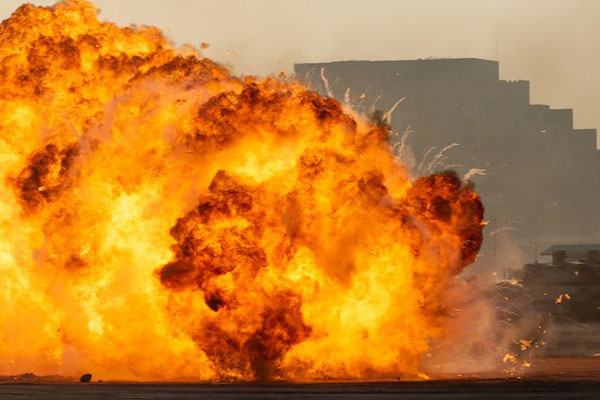The escalating conflict between Israel and Hamas spirals into a cycle of violence

[Massive fire explosion close up in military combat and war. Credit to Unsplash]
In an unexpected turn of events, the tensions in the Middle East erupted into a conflict between Israel and the Palestinian militant group, Hamas, marking one of the most violent episodes in recent history.
The war that commenced with a surprise attack by Hamas on Israeli soil on October 7, has persisted for 15 days, showing no signs of abating, leaving a devastating trail of destruction and loss in its wake.
The initial attack, launched at the crack of dawn on the final day of a week-long Jewish holiday, saw Hamas militants breach Israel’s separation barrier around Gaza, utilizing heavy equipment, motorboats, and paragliders to infiltrate Israeli territory from land, sea, and air.
In response to the attack, Israel initiated the "Iron Sword" operation and launched airstrikes on Gaza. On October 8th, Prime Minister Benjamin Netanyahu declared a state of war, promising a strong retaliation against Hamas.
In the following days, the death toll soared, exceeding 5,700, with casualties on both sides.
Israel initiated a total blockade of the Gaza Strip, severing electricity, and restricting access to food and fuel.
Gaza, already grappling with the challenges posed by frequent airstrikes and widespread poverty, found itself on the brink of a humanitarian disaster.
The international community, initially divided in its response to this disaster, began to express growing concern over the unfolding crisis.
The United Nations and the European Union condemned Israel’s siege tactics, while the U.S. provided unequivocal support, dispatching the USS Gerald R. Ford to the East Mediterranean Sea and promising military aid.
The crisis further deepened as the airstrikes in Gaza continued unabated.
The only power plant in the region was forced to shut down due to the power outage, leaving hundreds of thousands displaced and the healthcare system on the verge of collapse.
International human rights organizations sounded the alarm, with the International Committee of the Red Cross warning that hospitals in Gaza were at risk of becoming morgues.
On the 13th day, Gazans found themselves trapped in a veritable hell, with nowhere to go as the shelling continued.
Israel, undeterred, announced that it would not resume essential services until Hamas released the hostages it had taken.
The international community, witnessing the dire situation unfold, began to turn away from Israel, urging restraint and a de-escalation of the conflict.
Prime Minister Netanyahu during his visit to an Israeli military unit near Gaza, indicated that a ground offensive was imminent, while Iran, a staunch supporter of Hamas, issued a stern warning to Israel, hinting at possible intervention.
The situation grew increasingly volatile, with concerns that the war could potentially spill over into other regions of the Middle East.
As the war entered its 15th day, the prospects for a swift resolution seemed bleak, with both sides showing no signs or willingness to back down.
The international community convened at the Cairo Peace Conference, emphasizing the need for humanitarian support and a peaceful resolution, but the conference concluded with no tangible outcomes, leaving the future of the region uncertain and the rest of the world watching anxiously as the tragedy continues to unfold.

- Jason Ha / Grade 12
- Fairfax Christian School

![THE HERALD STUDENT REPORTERS [US]](/assets/images/logo_student_us.png)
![THE HERALD STUDENT REPORTERS [Canada]](/assets/images/logo_student_ca.png)
